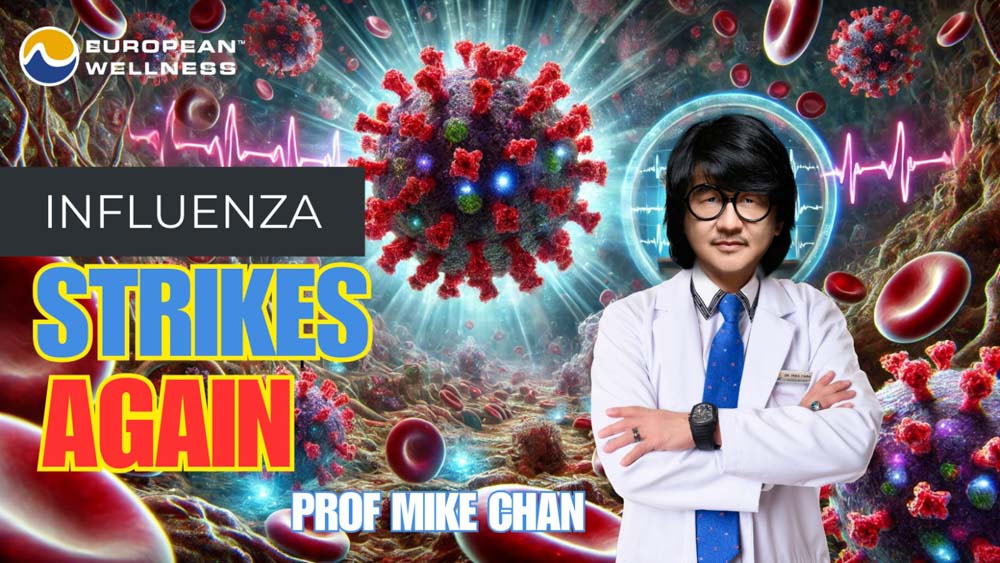
The tragic death of Taiwanese actress Barbie Hsu, who succumbed to pneumonia after contracting the flu while on vacation in Japan, has sent shockwaves across Asia. Her passing has sparked grief and heightened concerns over the worsening flu pandemic, which is overwhelming hospitals in Taiwan, China, and Japan. In response, governments have intensified vaccination campaigns and public health measures to curb the outbreak.
Global Flu Outbreak and Statistics
Japan: Japan experienced its largest flu outbreak in 25 years during the last week of December 2024, with over 317,812 cases reported from December 23 to 29. This is more than three times the number of cases from the same period in 2023. The Kyushu region was particularly affected, with high case rates per medical institution in prefectures like Oita and Kagoshima. Additionally, an outbreak of avian influenza has spread across Japan, leading to the culling of over 5 million birds in January 2025.
Taiwan: Taiwan is currently experiencing its worst flu season in a decade, with 667 severe cases and 132 deaths recorded since October 2024. Hospitals are overwhelmed, with a record number of flu-related emergency visits reaching around 160,000 per week. In response, the Taiwanese government has secured over 2 million antiviral doses and launched an aggressive vaccination campaign, administering 6.4 million flu shots to date.
China: The country is grappling with a sharp rise in Human Metapneumovirus (HMPV) infections, particularly among children. This surge has raised international concerns over potential viral mutations, prompting calls for greater transparency from Chinese health officials. Researchers are calling for more genetic sequencing to keep an eye on possible viral recombination or the appearance of new flu strains.
The flu pandemic is also impacting the United States, with 24 million reported illnesses, 310,000 hospitalizations, and 13,000 deaths so far this season. Forty-three U.S. states report “high or very high” flu activity, and pediatric deaths have reached nearly 60.
United States: The flu pandemic is also severely impacting the United States, with at least 24 million reported illnesses, 310,000 hospitalizations, and 13,000 deaths so far this season. The current flu season in the U.S. is the worst it has been in at least 15 years. Forty-three U.S. states report “high or very high” flu activity, and emergency room visits for influenza are “very high” nationwide. More than 48,000 patients were hospitalized with influenza in a single week. There have been 57 pediatric deaths reported so far, with nearly 60 total child deaths attributed to the flu. Some schools have been forced to close or switch to remote learning due to the increase in respiratory illnesses. A human infection with an influenza A (H1N2) variant has also been reported. While COVID-19 and RSV cases appear to be falling, flu cases continue to force school closures in some states. Levels of influenza nationwide are now at the highest they have been since the peak of the 2009 swine flu pandemic.
Prof. Mike Chan: Strengthening Immunity Against the Flu
In response to the crisis, Prof. Mike Chan has outlined key regenerative medicine strategies aimed at fortifying the immune system and reducing severe flu complications. His approach emphasizes cellular repair, immune modulation, and inflammation control through cutting-edge biomedical therapies.
1. Thymus Therapy for Immune System Reinforcement
The thymus gland is vital for immune defense, producing T-cells that target and destroy viral infections. As thymus function declines with age, older adults become more susceptible to severe flu complications. Thymus therapy aims to restore and enhance this critical immune function.
How it works:
- Stimulates T-cell production to improve the body’s ability to fight flu viruses.
- Prevents immune exhaustion, reducing the risk of secondary infections like pneumonia.
- Supports long-term immune resilience, especially in aging populations.
By revitalizing thymus activity, this therapy strengthens immune defenses, offering a proactive approach to managing flu and protecting vulnerable groups.
2. Super Transfer Factor for Immune System Enhancement
Super Transfer Factor (STF) is an advanced immunotherapy that boosts the immune system’s ability to recognize and fight viral pathogens like the flu. Derived from immune cells, STF “trains” the body’s defenses to respond more effectively.
How it works:
- Teaches immune cells to identify and destroy flu viruses quickly.
- Enhances antiviral activity while regulating inflammation to prevent lung damage.
- Reduces flu severity and speeds up recovery by optimizing immune response.
STF offers a targeted, efficient way to strengthen immunity and combat respiratory infections, making it a key tool in flu management.
3. Mitochondrial Regeneration for Cellular Energy and Respiratory Health
Mitochondria, the powerhouses of cells, are essential for maintaining energy production and immune function, particularly in the lungs. During a flu infection, mitochondrial dysfunction can lead to severe fatigue, weakened immunity, and damage to lung tissue, increasing the risk of complications like pneumonia.
How it works:
- Boosts energy production in immune cells, enhancing their ability to fight respiratory infections.
- Protects lung tissue by preventing cell death and promoting cellular repair.
- Reduces the risk of severe flu complications, such as pneumonia, by maintaining healthy mitochondrial function in respiratory cells.
By supporting mitochondrial health, this approach not only improves energy levels but also strengthens the body’s ability to recover from respiratory illnesses, making it a vital component of flu management.
4. Peptides Therapy for Respiratory Conditions
Peptides, short chains of amino acids, are emerging as a targeted approach for treating respiratory infections like the flu. Unlike exosome therapy, which relies on cell-derived vesicles for repair and immune modulation, peptides work by directly disrupting viral mechanisms, such as blocking viral entry or replication.
How it works:
- Targets and neutralizes respiratory viruses, such as influenza, with precision.
- Enhances the body’s antiviral response by inhibiting viral spread.
- Offers a simpler, faster, and more cost-effective solution for managing respiratory outbreaks.
While exosome therapy focuses on repair and immune modulation, peptides provide a direct and efficient way to combat respiratory pathogens, making them a promising alternative in flu treatment.
5. Detoxification & Anti-Inflammatory Protocols
Severe flu cases often involve excessive inflammation, leading to lung damage, cytokine storms, and multi-organ distress. Detoxification therapies aim to clear viral toxins and reduce immune overactivation.
How it works:
- Removes toxic metabolites that contribute to flu complications.
- Lowers inflammation through bioactive compounds like curcumin and resveratrol.
- Supports liver and kidney function, essential for virus clearance.
A Race Against Time to Contain the Flu Pandemic
As Japan, China, and Taiwan grapple with rising flu cases, governments are accelerating public health efforts, emphasizing vaccinations, antiviral distribution, and public hygiene awareness. However, the continued mutation of flu viruses and the unpredictable nature of HMPV’s global spread pose ongoing challenges. Public health officials recommend the annual flu shot, but only about 44% of adults and 45% of children received it this winter.
While conventional medicine focuses on treating flu symptoms, Prof. Mike Chan advocates for a proactive approach, reinforcing the immune system before infections take hold.
“In the fight against flu pandemics, regenerative medicine offers a new frontier of defense,” he stated. “By strengthening our immune systems at the cellular level, we can reduce mortality and prevent future outbreaks.”
With the pandemic unfolding at an alarming rate, the world is now at a critical juncture—will traditional treatments suffice, or is it time to embrace the regenerative future of medicine?



Comments are closed.